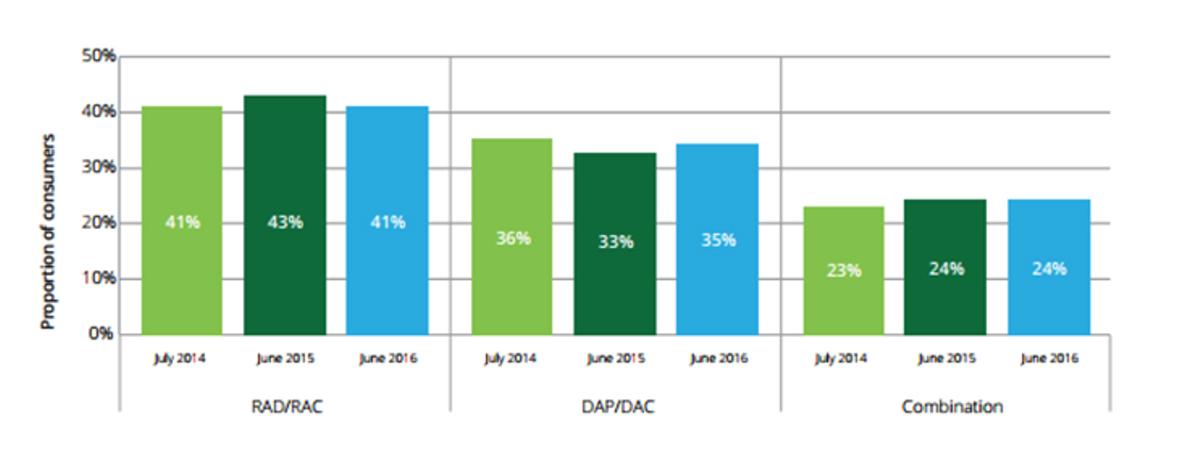RAD versus DAP payment history
If you move into residential care, you may be asked to pay for accommodation. You can choose to pay a lump sum Refundable Accommodation Deposit (RAD) or a Daily Accommodation Payment (DAP). RADs have been the most popular choice, but more and more residents are using a combination of RADs and DAPs. The graph below shows the percentages of residents choosing to pay either a RAD or a DAP or a combination in 2014, 2015 and 2016.

Quick facts
- Aged care providers were holding $21.87 billion in accommodation payments (as at June 30, 2016) for 82,000 residents (average of $266,717).
- The average RAD published on MyAgedCare at April 6, 2017 was $391,000.
- 215 aged care providers charge an accommodation payment more than $550,000.
This is a lot of money, but RADs are refundable when you leave care. You take no risk as the Federal Government guarantees repayment for approved service providers and Centrelink don’t count the assets when calculating pension entitlements. Over the last 11 years, the guarantee scheme has been triggered 10 times and the government has repaid $43 million of deposits to residents.
Sources: Fifth report on the Funding and Financing of the Aged Care Sector July 2017, Aged Care Financing Authority. Various government press releases.
Check the fees you are paying
Most fees in residential aged care are regulated by government, but more and more care providers are charging for additional services – so check what you are paying for. When moving into residential care three categories of fees apply:
- Accommodation costs: to pay for your room and access to the amenities where you live.
- Daily care fees (basic fee and means-tested fee): a contribution towards your basic living expenses (eg. food, electricity, care staff, cleaning services).
- Additional services: extra things that may add to your lifestyle or convenience (eg. Foxtel, newspapers, meal selection, happy hours, transport services).
More and more aged care providers are offering residents additional services for an extra daily fee. The range of services and the prices charged vary widely. These fees are not published on the MyAgedCare website, so when deciding where you want to live, ask the provider for a schedule of available services and the prices for each one.
When you are offered a place in residential care will be asked to sign a Resident Agreement. This should detail (among other things) the cost you have agreed for your room, the type of room and what additional service fees you have agreed to pay. Read the details carefully to decide:
- What services you are being provided and whether they are things you want.
- The fee you need to pay for these services.
- Whether you can opt-out and stop paying the fees if you no longer want to receive the services.
Next steps
Some simple rules may help you to understand your obligations and rights:
- Always read your Resident Agreement carefully before signing.
- If you are unsure about the fees specified, ask the service provider to explain the fees and help you understand what you are being asked to pay for.